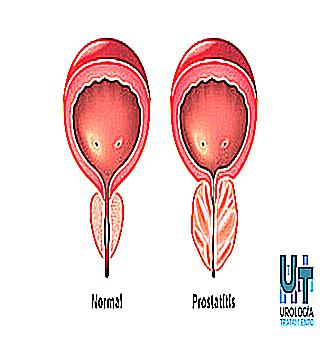Home >
Erectile Dysfunction >
Effect of prostatitis on semen
Effect of prostatitis on semen

Men mistakenly believe that this disease appears in many men in old age, causing a malfunction in the urethra. This disease can occur in men of any age. It happens that a man does not know that he is sick, since this disease shows almost no symptoms. As a result, it is difficult for doctors to identify this disease during diagnosis. The analysis of the patient's semen helps to detect this disease, since it affects the semen. Your doctor may prescribe medications to treat prostatitis. Do not treat this disease on your own.
How does prostatitis affect semen?
The disease greatly affects the reproductive functions of men. In the first stage of the disease, the man becomes infertile and the quality of the ejaculate becomes worse. If the disease is advanced, erectile dysfunction occurs. Often married couples want to have children, but they cannot, therefore doctors advise to undergo an examination. The disease can greatly affect the internal tissues.
Sperm during prostatitis changes, and other disorders appear:
- Desire and potency in men decreases. Due to bacteria and harmful microorganisms, active cells that produce the male hormone die. Testosterone levels decrease, attraction to the opposite sex decreases.
- During the discharge of semen, half of the sperm is lost, for the production of which the prostate gland is responsible. Due to the disease, the production of semen is reduced. If the patient's illness is severely neglected, it completely disappears. The orgasm disappears or weakens, due to the inflammatory process, it does not erupt, but flows. When it is released, men experience unpleasant sensations.
- The appearance of adhesions in family channels. The seminal fluid becomes thick due to inflammation. Sperm cells are destroyed. Due to histamine, the structure of active cells begins to break down. Under the influence of bacteria, sperm cells quickly die. Cells similar to reproductive cells begin to be created. The created spermatozoa begin to attack macrophages, the structure of the organism itself begins to be destroyed. The work of the prostate gland is disrupted. Sperm production decreases due to inflammation.
Under the influence of inflammatory processes, the number of active cells decreases and the work of the prostate gland is disrupted, because of this, irreversible processes can begin. As a result, the man may become infertile.
Sperm type
A patient may suspect that he has inflammation in the area of the prostate gland if he looks at his semen:
- Color. In the normal state, it is grayish in color. If the color of the semen has changed, this may indicate a malfunction of the prostate.
- Composition. There are no foreign inclusions in normal semen. If it is thick, resembling semolina in its density, this may indicate persistent inflammation in the prostate area. If its consistency is transparent, it indicates the absence of sperm.
- Fluidity. If the semen is very viscous interspersed, this indicates an inflammatory process. In the inflammatory process, prostatitis is not always to blame. If the semen looks like jelly, this indicates an inflammatory process. Liquid semen indicates normal semen. If the semen is persistently fluid, this indicates that the prostate is not working properly.
Most men seek help from their doctor if the semen has changed its color.
Atypical semen color indicates disease:
- Yellow, thick seminal fluid is not indicative of disease. In old age, many men have a yellowish sperm color due to age-related changes in the body. The seminal fluid passes through the urinary canal due to this yellowish seminal fluid. Foods containing dyes and antibiotics also affect the yellow color of semen.
- If the semen is bright yellow, this indicates that the disease is beginning to progress. If the seminal fluid emits a nasty smell, this indicates a developing disease.
- Red semen is indicative of tissue damage and prostatitis.
- Black seminal fluid indicates that blood has entered the ejaculate.
With prostatitis, sperm changes. The doctor can prescribe an effective course of treatment by analyzing the appearance of the semen.
Spermogram
Spermogram is rarely used after prostatitis. Basically, when other methods of analysis do not give an accurate diagnosis. It is often prescribed after treatment and the treatment must be verified by this method of analysis.
Sperm production during inflammation
During sex, a man releases little or no sperm, which indicates an inflammatory process.
Let's list all these violations:
- Orgasm disappears during the entire intercourse. Some semen is produced.
- Orgasm comes, but no semen comes out.
Inflammation in the prostate gland leads to sperm retention and other consequences:



























